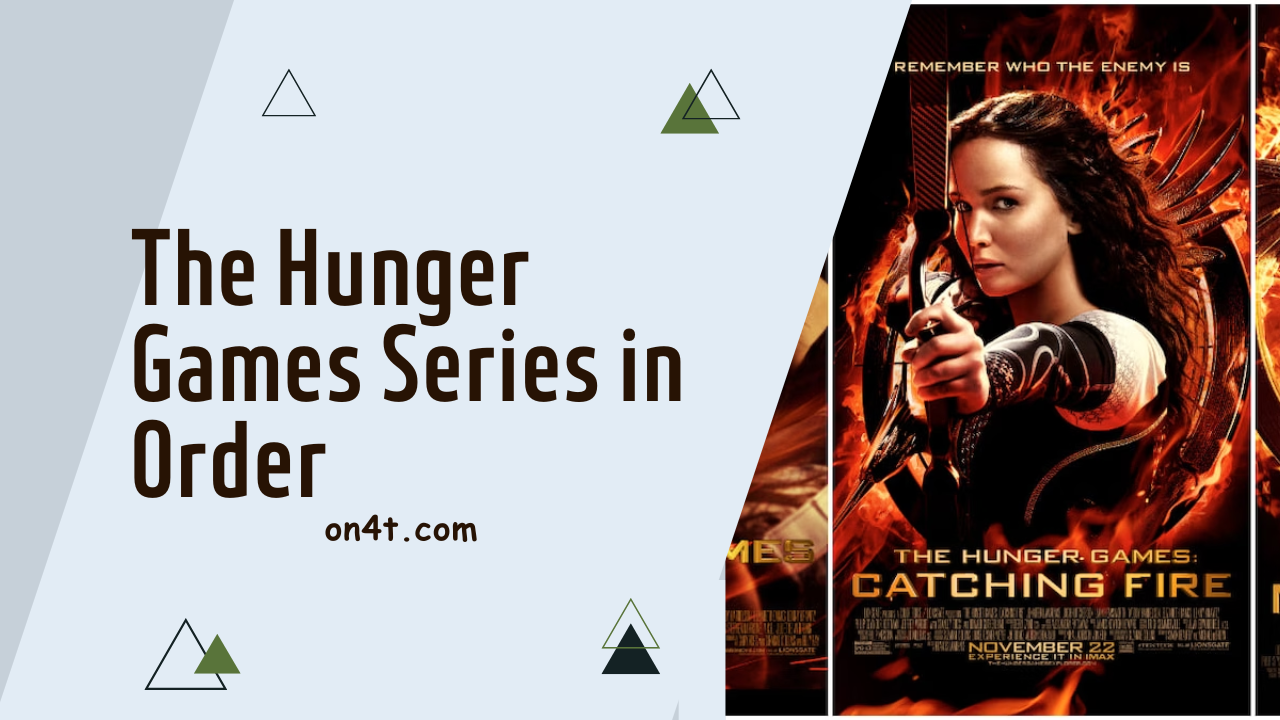The Hunger Games series, comprising three novels by Suzanne Collins, follows the gripping tale of Katniss Everdeen in a dystopian world where children fight to the death in televised events. As the story unfolds, readers are drawn into a narrative of survival, rebellion, and sacrifice, navigating themes of power, identity, and the consequences of war.
In this article, we will discuss the chronological order of The Hunger Games series, providing readers with a clear understanding of how the events unfold across the trilogy.
Understanding The Hunger Games Series
“The Hunger Games” series, written by Suzanne Collins, is a gripping set of dystopian novels that have captivated readers worldwide. The series is set in Panem, a futuristic country in what used to be North America. Panem is divided into 12 districts and the Capitol, which rules over them with an iron fist. Here’s a breakdown to help you understand the series better:
The Basic Premise
The story revolves around the Hunger Games, an annual event where one boy and one girl (called “tributes”) from each of the 12 districts are selected through a lottery system to participate in a televised fight to the death. The Games are both punishment for a past rebellion and a form of entertainment for the Capitol.
Main Characters
- Katniss Everdeen: The protagonist, a tough and resourceful girl from District 12, who volunteers for the Hunger Games to save her younger sister, Prim, from participating.
- Peeta Mellark: The male tribute from District 12, who has a complex relationship with Katniss. He’s known for his strength, charm, and secretly harbored feelings for Katniss.
- Gale Hawthorne: Katniss’s best friend and hunting partner, who shares her disdain for the Capitol. His relationship with Katniss is tested by the events of the Games and the rebellion.
The Books
- The Hunger Games: Introduces Katniss, the Hunger Games, and her initial participation in the Games alongside Peeta. The book explores themes of survival, societal inequality, and the effects of violence.
- Catching Fire: The second book sees the aftermath of the 74th Hunger Games and leads to Katniss and Peeta’s involvement in a larger rebellion against the Capitol. The Quarter Quell, a special edition of the Games, brings previous winners back into the arena, intensifying the conflict.
- Mockingjay: The final installment focuses on the full-scale rebellion against the Capitol. Katniss becomes the symbolic “Mockingjay” of the rebellion, struggling with her role as a leader and dealing with the psychological scars of the Games and war.
Themes and Analysis
The series is rich with themes such as power and resistance, the effects of war, media manipulation, and personal identity versus societal roles. Katniss’s character development is central, as she navigates the complexities of love, friendship, and leadership in the face of oppression and war.

“The Hunger Games” series is not only a thrilling adventure but also a profound commentary on society, highlighting the consequences of desensitization to violence and the importance of empathy and resilience. The story resonates with readers through its exploration of universal themes, making it a powerful and enduring work of fiction.
Complete The Hunger Games Series In Order
- The Hunger Games (March, 2012)
- The Hunger Games: Catching Fire (November, 2013)
- The Hunger Games: Mockingjay – Part 1 (November, 2014)
- The Hunger Games: Mockingjay – Part 2 (November, 2015)
- The Hunger Games: The Ballad of Songbirds & Snakes (November, 2023)
FAQs
1. What is The Hunger Games series about?
The Hunger Games series is a dystopian story set in a future where the government holds annual televised events where children fight to the death. It follows Katniss Everdeen’s journey as she becomes a symbol of rebellion against the oppressive regime.
2. How many books are in The Hunger Games series?
There are four books in The Hunger Games series: “The Hunger Games,” “Catching Fire,” “Mockingjay,” and “The Ballad of Songbirds and Snakes.” Each book adds depth to the story and characters.
3. Who is the author of The Hunger Games series?
The Hunger Games series was written by Suzanne Collins. Her captivating storytelling and vivid world-building have made the series immensely popular among readers of all ages.
4. What age group is The Hunger Games series suitable for?
The Hunger Games series is generally suitable for young adult readers and older. While the themes of violence and oppression may be intense for some younger readers, the series has been widely embraced for its compelling narrative and strong characters.
Conclusion
The Hunger Games series paints a vivid picture of a dystopian world plagued by oppression and inequality. Through the journey of Katniss Everdeen, it explores themes of survival, sacrifice, and rebellion against injustice.
In addition, the On4t Online TTS tool enhances accessibility by converting text into speech, aiding individuals with visual impairments or learning disabilities. Its user-friendly interface and customizable options make it a valuable resource for enhancing comprehension and inclusivity in online content.